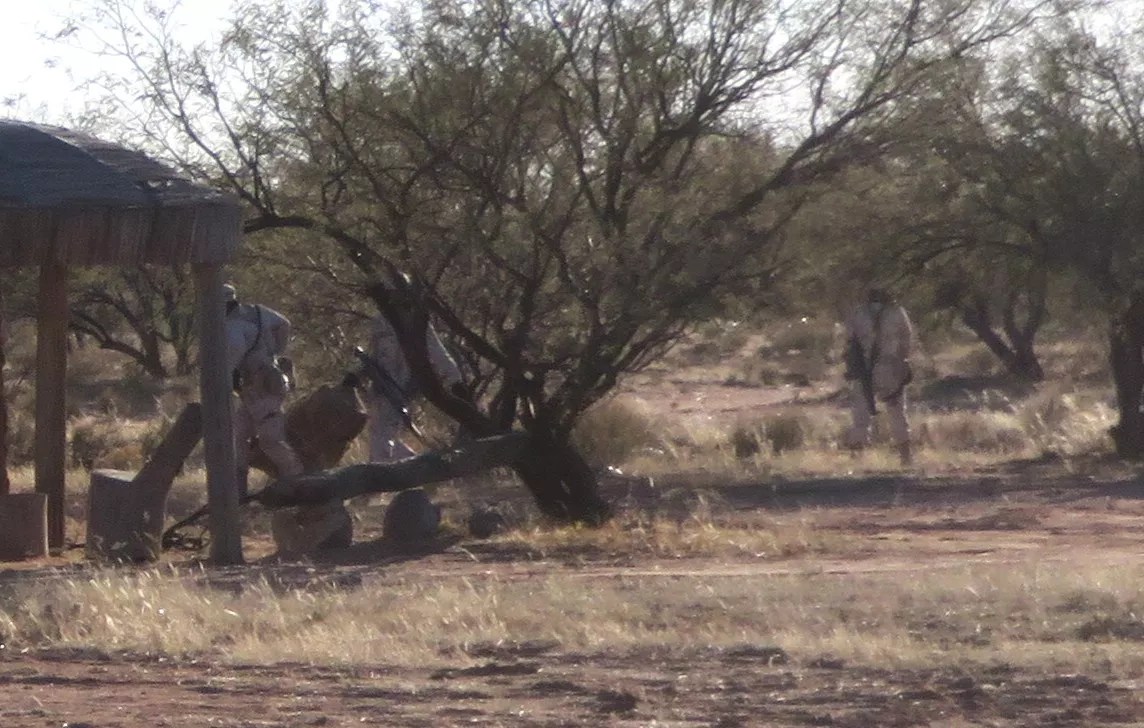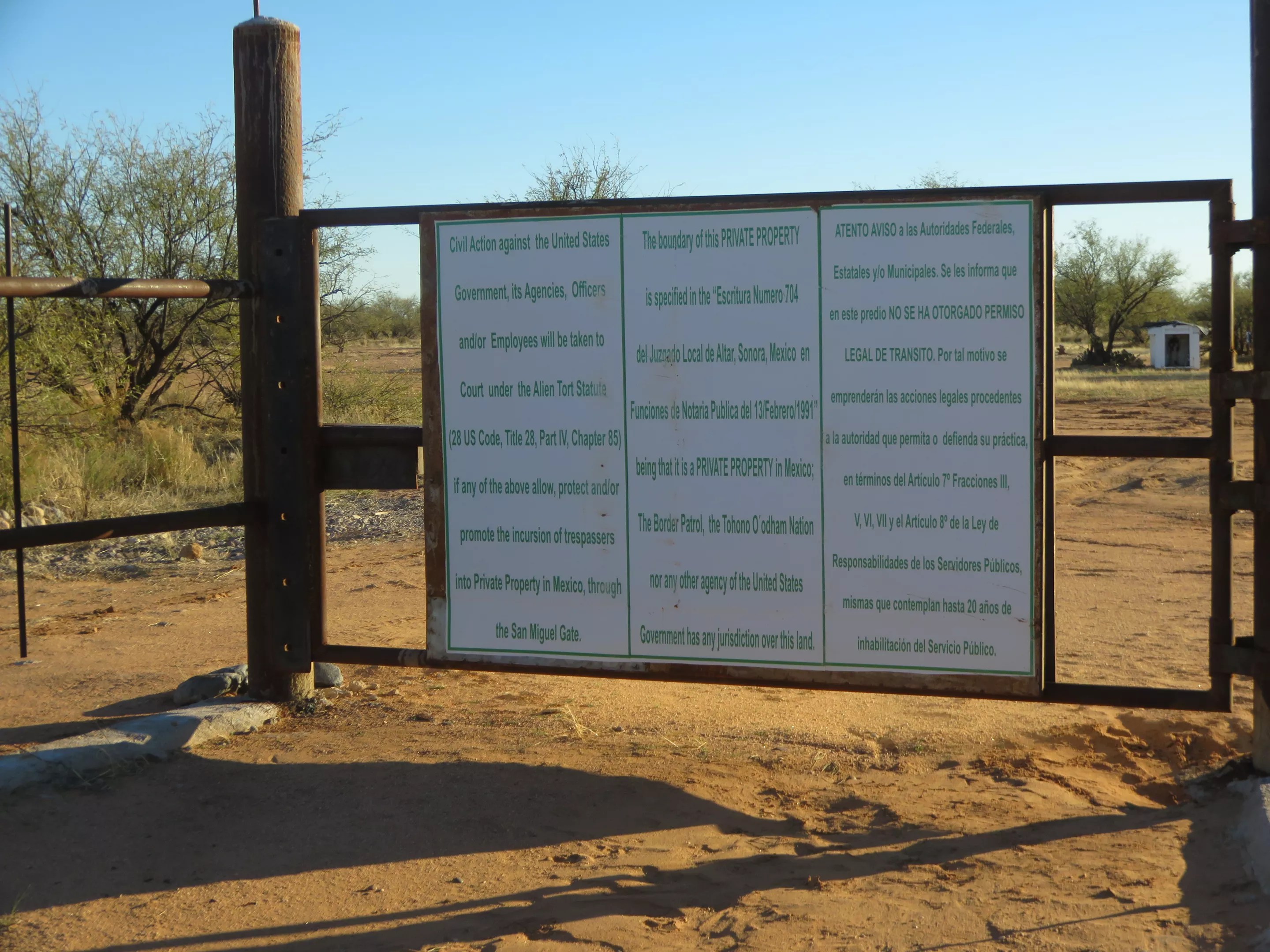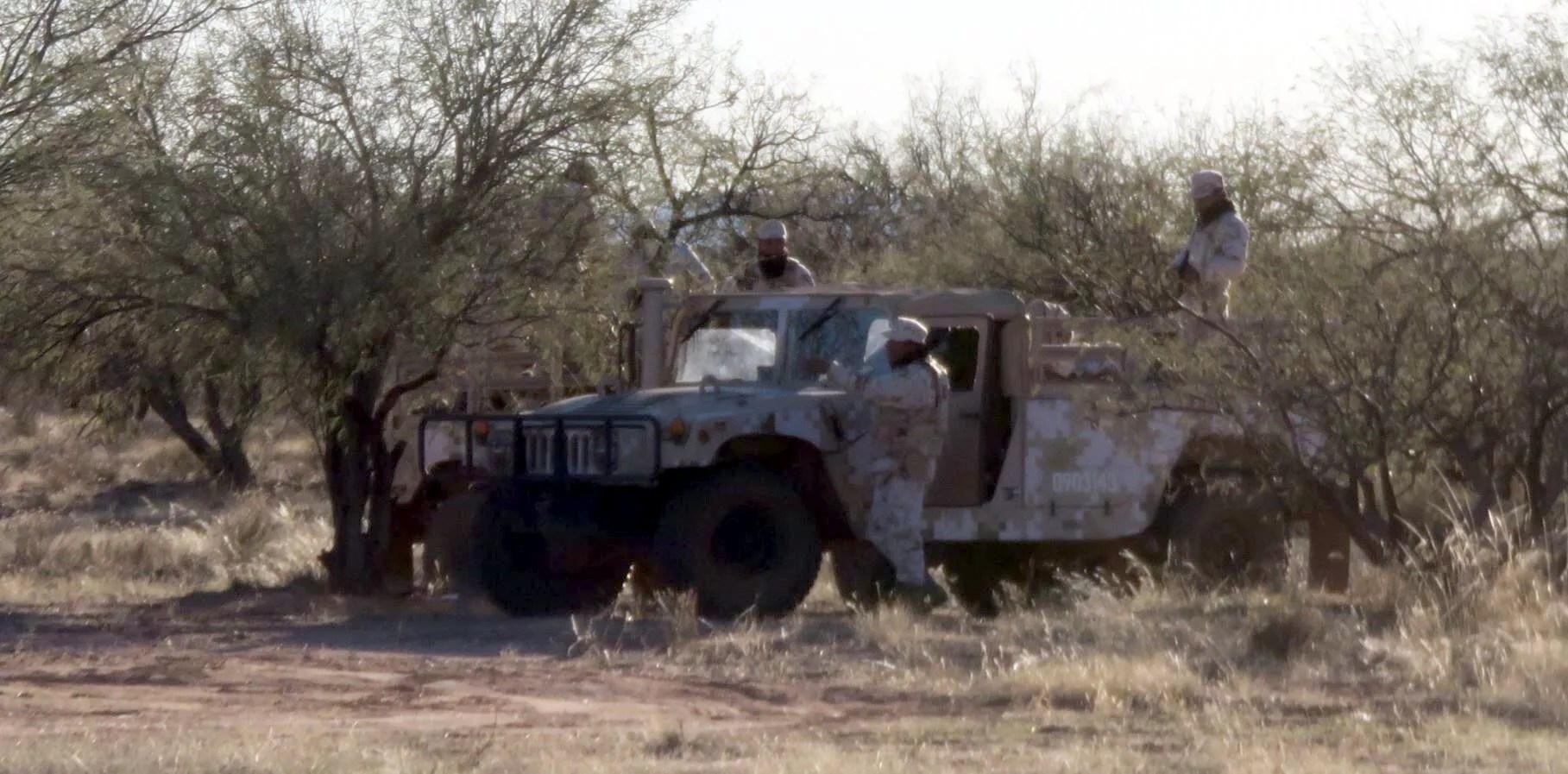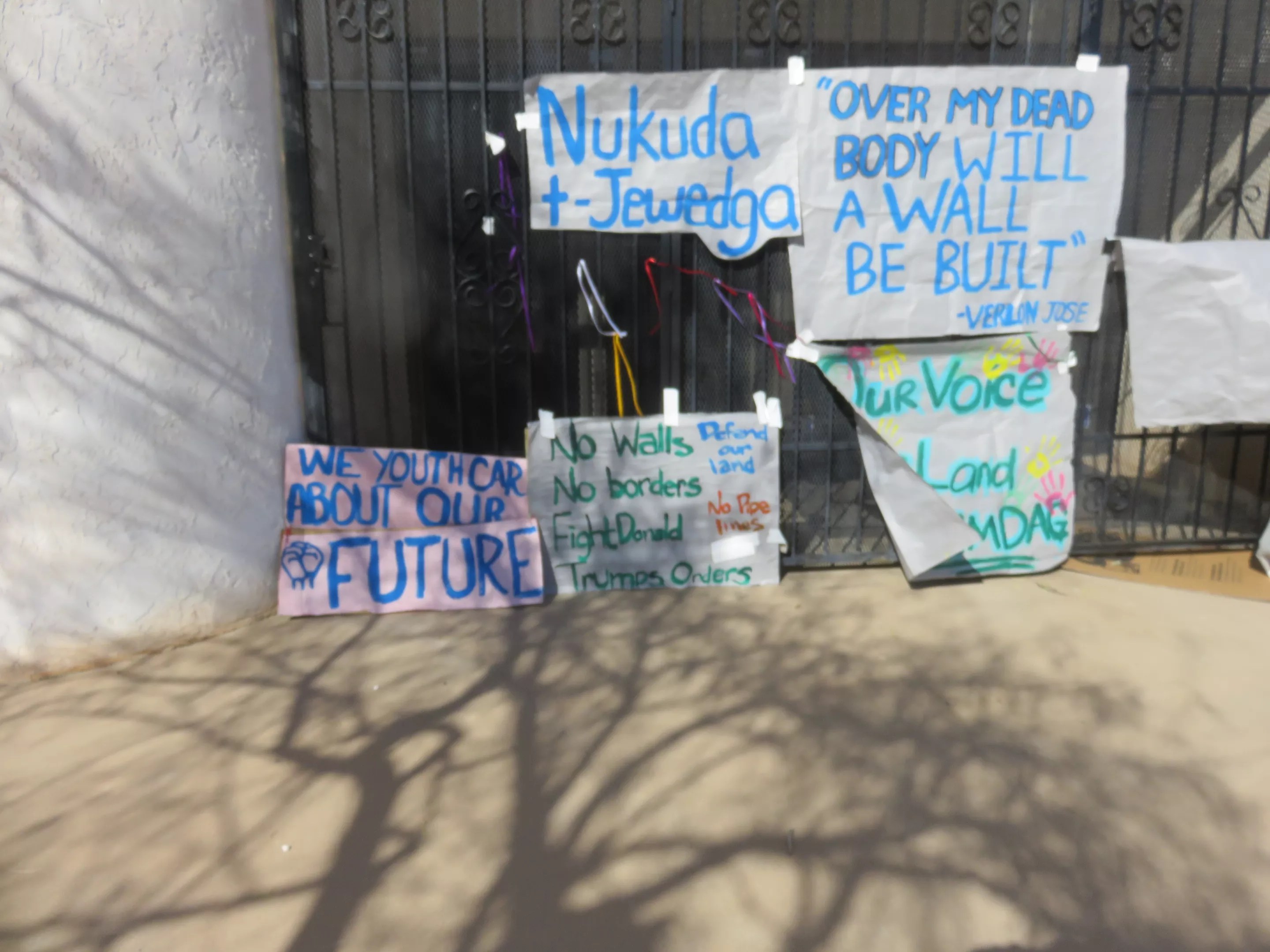
Ray Stern

Audio By Carbonatix
The Tohono O’Odham Nation government vows strong opposition to President Donald Trump’s border wall, but the Arizona tribe’s biggest border problem actually may be Mexico.
More specifically, it appeared to a New Times reporter watching from the U.S. side this past weekend that Mexico is ignoring suspicious activity on tribal land south of the border, including armed men traveling in military-style Hummers.
And the country apparently has done nothing about the closing of an important crossing gate.
Smugglers have ravaged the Tohono O’Odham’s land for 25 years, sparking an increasingly militarized border enforcement on the U.S. side.
This year, make your gift count –
Invest in local news that matters.
Our work is funded by readers like you who make voluntary gifts because they value our work and want to see it continue. Make a contribution today to help us reach our $30,000 goal!
Many tribal members have been corrupted, lured by the possibility of easy money into working with drug cartels.
Now, the culturally important San Miguel Gate on the Tohono reservation has been closed on the Mexican side.
Mexico’s government has done little, if anything, to solve the problems.

A sign erected last year on the Mexican side of the San Miguel Gate warns the U.S. government from promoting trespassing on private Mexican land.
Ray Stern
For more than 70 years, the United States and Mexico have allowed Tohono members to use the natives-only, unofficial port of entry to access traditional tribal land that straddles both countries.
Last year, someone bought the land in Mexico opposite the gate and put up a sturdy fence, a new gate and a no-trespassing sign on the southern side, ending that free access.
The gate is about 20 miles west of an official port of entry in Sasabe, Arizona, and about 60 miles west of Nogales.
Just who bought the land on the south side of the San Miguel Gate remains uncertain.
Although some news articles about the Tohono refer to the international border as bisecting the Tohono reservation, there is no reservation and no special rights for indigenous people in Mexico.

Men in camouflage on the Mexico side of the San Miguel Gate on Saturday.
Ray Stern
Tohono activist Mike Wilson told Arizona Public Media in December that tribal members have heard the land was bought by a Mexican ranching family.
On Saturday, New Times witnessed activity on the Mexican side of the gate that didn’t look like ranch work.
At about 4:30 p.m., a group of men dressed in camouflage arrived in two military-style H1 Hummers to the tiny house about 200 yards south of the gate.
Toting what appeared to be assault rifles, some stood watch as others proceeded to load boxes into the house on wheeled carts. No one came out to meet them.
The men seemed to have no concern about being seen by the U.S. Border Patrol agent inside a van parked near the gate. They drove off casually when finished.
The Border Patrol on Monday didn’t respond to questions about whether agents at the San Miguel Gate have seen similar activity, or what it may mean.
Also on Monday, Wilson declined comment, saying the news media was untrustworthy.
Indian Country Media Network broke the story of the March 3 gate closure in April, but the issue has received very little media attention.

In some places on the Tohono O’odham Nation, only barbed wire marks the international border.
Ray Stern
Tohono O’odham Nation’s current chairman, Edward Manuel, told ICTMN “the gate is of critical importance to O’odham members living both in the U.S. and Mexico.”
The Mexican Consulate reportedly wrote to a Tohono activist that it could not directly investigate the matter, but would pass the information to Mexican authorities.
Neither the Tohono O’odham Nation nor the Mexican Consulate in Phoenix returned messages for this article.
Trump’s January 25 executive order on border security demands “the immediate construction of a physical wall on the southern border.”

The order doesn’t contain fine details, such as the height of the wall or how it will integrate technology and a planned increase in Border Patrol agents.
Funding for the project hasn’t been nailed down, but the Tonoho O’odham Nation has been portrayed in the news media as ground zero for Trump’s plan.
The rural reservation is an austere and scenic territory larger than Delaware and Rhode Island and home to about 10,000 people.
Its 75-mile international border through the rugged Sonoran Desert is without question one of the country’s prime smuggling zones.
The Secure Fencing Act of 2006 that followed the 9/11 attack resulted in steel posts at a few places on reservation’s Mexico border.
Much of the Tohono border’s length contains vehicle barriers that pedestrians can easily cross, and which can be moved or cut by smugglers.
In some places, the border is marked only by strands of barbed wire or, on mountain crags, nothing at all.
A wall and more militarized border would make it even tougher for tribal members to travel easily on their ancestral, sacred land.
After Trump floated his border-wall plan on the campaign trail, Tohono Vice-chairman Verlon Jose made headlines with his statement that it would only happen “over my dead body.”
It is an attention-getting line: Former Tohono Chairman Ned Norris Jr. made the news in 2007 with the same saying about the possibility of a border wall.
If Mexico had clamped down on the smuggling that has damaged the Tohono land and people over the years, border security might not be the over-arching issue it has become on the reservation.
But as the situation at the San Miguel Gate shows, Mexico doesn’t seem to care much about the Tohono O’odham Nation.

Signs opposing Trump’s border wall at the Tohono O’odham’s administrative office in Sells.
Ray Stern